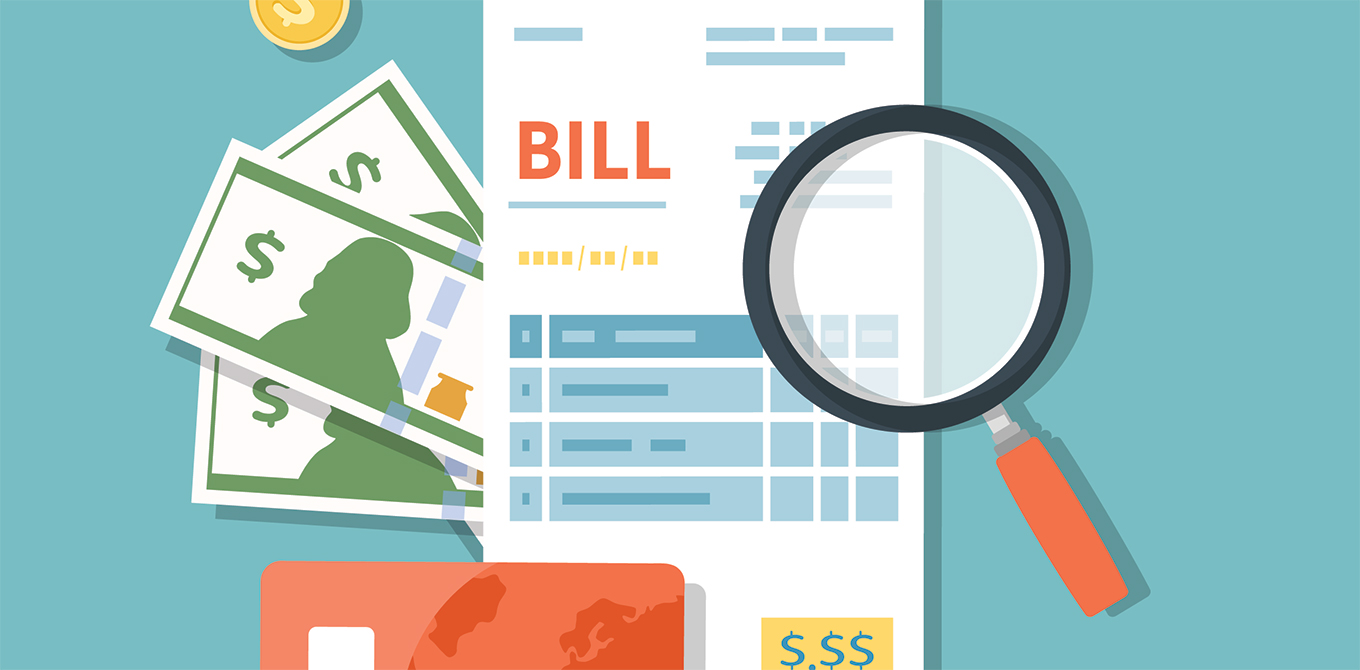5 Green Products Worth Your Money (and 5 to Skip)
If you're watching, you'll regularly see new (pricey) products introduced that promise to help save the environment—or at least ease your conscience about your personal impact. There’s no doubt that true “green” or eco-friendly products – ones that are energy efficient, made from recycled materials, or chemical free – can make an impact. But are they all really worth your money?
The truth is that some of these “green" products are not actually doing much for the environment and only take extra money from your pocket. This is known as “Greenwashing” – making unsubstantiated or misleading claims about the environmental benefits of a product or company.
So, before purchasing a product that promises to improve the environment, it's important to make sure it's actually making a difference for the world around you—and that it's worth the money you're paying.
5 Products to help you "go green"
1. Reusable water bottles. Americans purchase more than 50 billion single-use plastic bottles each year, or about 156 per person, according to Earth Day Network. Only 23 percent are recycled while millions of tons of them end up in the oceans, polluting the water and damaging sea life. Those that do make it to landfills take 450 years to decompose.
A high-quality reusable water bottle may cost $25 or $30, but if you use it instead of single-use plastic bottles, you can help keep plastics out of the ocean and off the land. You'll also save money: If you paid just 50 cents for each single-use plastic bottle, you'd spend $312 buying 156 bottles in one year. Meaning you could save around $300 just by purchasing a reusable water bottle.
2. LED light bulbs. They may cost a little more, but t's worth switching from incandescent light bulbs to LED light bulbs. More manufacturers have introduced LED bulbs, and the prices have dropped significantly from just a few years ago. For instance, you can purchase a 24-pack of 800 lumens LED bulbs, which are comparable to traditional 60-watt bulbs, for about $25. The LED bulbs use less energy and last longer—usually about nine years.
3. Organic Produce. While organic fruits and vegetables are pricier than traditional produce, they provide both health and environmental benefits. In order to be labeled “organic” they must be grown or farmed without the use of artificial chemicals, hormones, antibiotics, or GMOs. (Genetically modified organisms). And because organic produce doesn’t contain artificial preservatives, they are on the shelf for less time, and consumers get a fresher, better-tasting product. When it comes to product, going organic is definitely a smart buy.
4. Programmable thermostat. You'll have to pay $100 or more for a programmable thermostat (about three times the cost of a manual thermostat), but it really can conserve energy, and over time, it can help you save significantly on power bills. If you set the thermostat to stop running while you're away from home or sleeping—several degrees warmer in summer and several degrees cooler in winter—you can save about 10 percent per year on your energy bills, according to the U.S. Department of Energy.
If your normal power bill is $200 monthly, that means you could save $20 per month, or $240 per year, which more than pays for the thermostat within the first year.
5. Secondhand items. The consumerist culture that encourages us to buy new things all the time is causing extreme damage to the environment. That's because it drives ongoing production processes that use up natural resources and are harmful to the environment, and contributes to excess waste. Rather than buying new, when possible, purchase used or secondhand clothing, furniture, electronics, and other items. You'll spend less money, stop contributing to harmful production, and keep items out of the waste stream.
5 Green products to skip
If you want to make choices that truly take the environment into account, you might rethink these so-called “green products."
1. Reusable shopping bags. The cost to produce cotton reusable bags is much higher than plastic shopping bags, and you'd have to use them hundreds or thousands of times to make it worth the environmental impact of production. Go ahead and use the reusable bags (and paper and plastic bags) that retailers give you for free, but don't spend the money to buy a new one just because it's cute.
2. Green cleaning products. Many brands claim their “green" cleaning products are more eco-friendly than they really are (Greenwashing). Rather than paying more money for a product that may not really be as environmentally-conscious as it claims, try saving your money and using do-it-yourself cleaning products such as baking soda and vinegar. These will save you money and can often be more effective cleaning agents too.
3. Sustainable wet wipes or makeup cleanser wipes.These flushable or disposable wipes may claim to be sustainable, but they are still single-use products designed to be thrown away after one use. And because many don't flush as advertised, they're notorious for clogging your toilets. You can be greener (and save money) by not buying them at all.
4. Organic Clothing. You can buy “eco-friendly” clothing made from organic cotton. While it appears as if this type of clothing is good for the environment, it must be dyed and finished with chemicals before it is sent to a store. Plus, according to Cotton Inc., it takes 669 gallons of water to grow an organic cotton t-shirt vs. 290 gallons for conventional cotton.
5. Green versions of items you already own. Tons of new products are being introduced to replace your current items with “green" alternatives, such as bamboo toothbrushes, reusable utensil sets, reusable cotton swabs, and eco-electronics. In many cases, these products are similar to the traditional versions but incorporate a few natural materials. They're still using harmful production processes and driving you to spend money on items you already have. Before purchasing anything new, make sure it's something you really need.





 Afrikaans
Afrikaans Albanian
Albanian Amharic
Amharic Arabic
Arabic Armenian
Armenian Azerbaijani
Azerbaijani Basque
Basque Belarusian
Belarusian Bengali
Bengali Bosnian
Bosnian Bulgarian
Bulgarian Catalan
Catalan Cebuano
Cebuano Chichewa
Chichewa Chinese (Simplified)
Chinese (Simplified) Chinese (Traditional)
Chinese (Traditional) Corsican
Corsican Croatian
Croatian Czech
Czech Danish
Danish Dutch
Dutch English
English Esperanto
Esperanto Estonian
Estonian Filipino
Filipino Finnish
Finnish French
French Frisian
Frisian Galician
Galician Georgian
Georgian German
German Greek
Greek Gujarati
Gujarati Haitian Creole
Haitian Creole Hausa
Hausa Hawaiian
Hawaiian Hebrew
Hebrew Hindi
Hindi Hmong
Hmong Hungarian
Hungarian Icelandic
Icelandic Igbo
Igbo Indonesian
Indonesian Irish
Irish Italian
Italian Japanese
Japanese Javanese
Javanese Kannada
Kannada Kazakh
Kazakh Khmer
Khmer Korean
Korean Kurdish (Kurmanji)
Kurdish (Kurmanji) Kyrgyz
Kyrgyz Lao
Lao Latin
Latin Latvian
Latvian Lithuanian
Lithuanian Luxembourgish
Luxembourgish Macedonian
Macedonian Malagasy
Malagasy Malay
Malay Malayalam
Malayalam Maltese
Maltese Maori
Maori Marathi
Marathi Mongolian
Mongolian Myanmar (Burmese)
Myanmar (Burmese) Nepali
Nepali Norwegian
Norwegian Pashto
Pashto Persian
Persian Polish
Polish Portuguese
Portuguese Punjabi
Punjabi Romanian
Romanian Russian
Russian Samoan
Samoan Scottish Gaelic
Scottish Gaelic Serbian
Serbian Sesotho
Sesotho Shona
Shona Sindhi
Sindhi Sinhala
Sinhala Slovak
Slovak Slovenian
Slovenian Somali
Somali Spanish
Spanish Sundanese
Sundanese Swahili
Swahili Swedish
Swedish Tajik
Tajik Tamil
Tamil Telugu
Telugu Thai
Thai Turkish
Turkish Ukrainian
Ukrainian Urdu
Urdu Uzbek
Uzbek Vietnamese
Vietnamese Welsh
Welsh Xhosa
Xhosa Yiddish
Yiddish Yoruba
Yoruba Zulu
Zulu